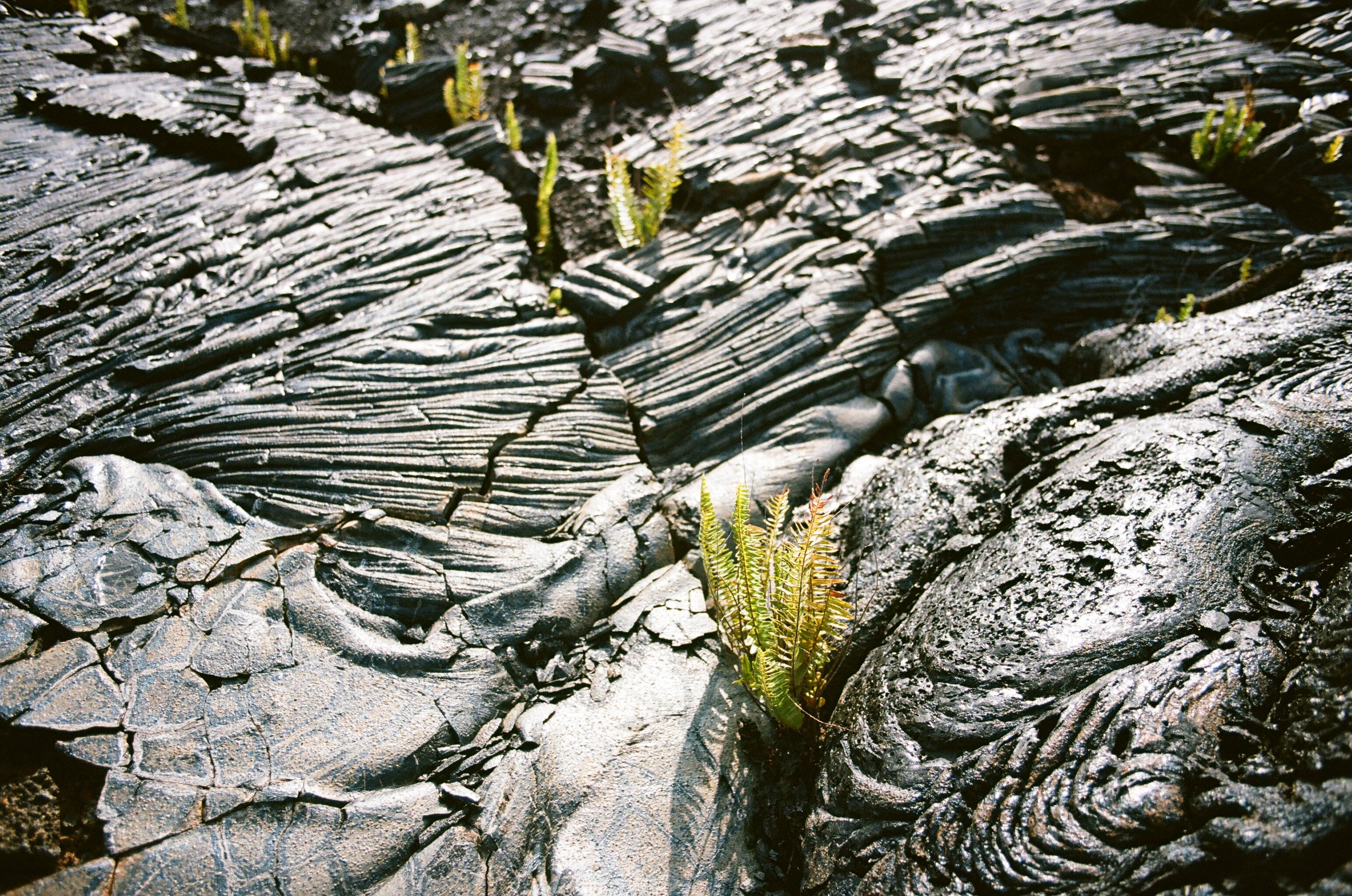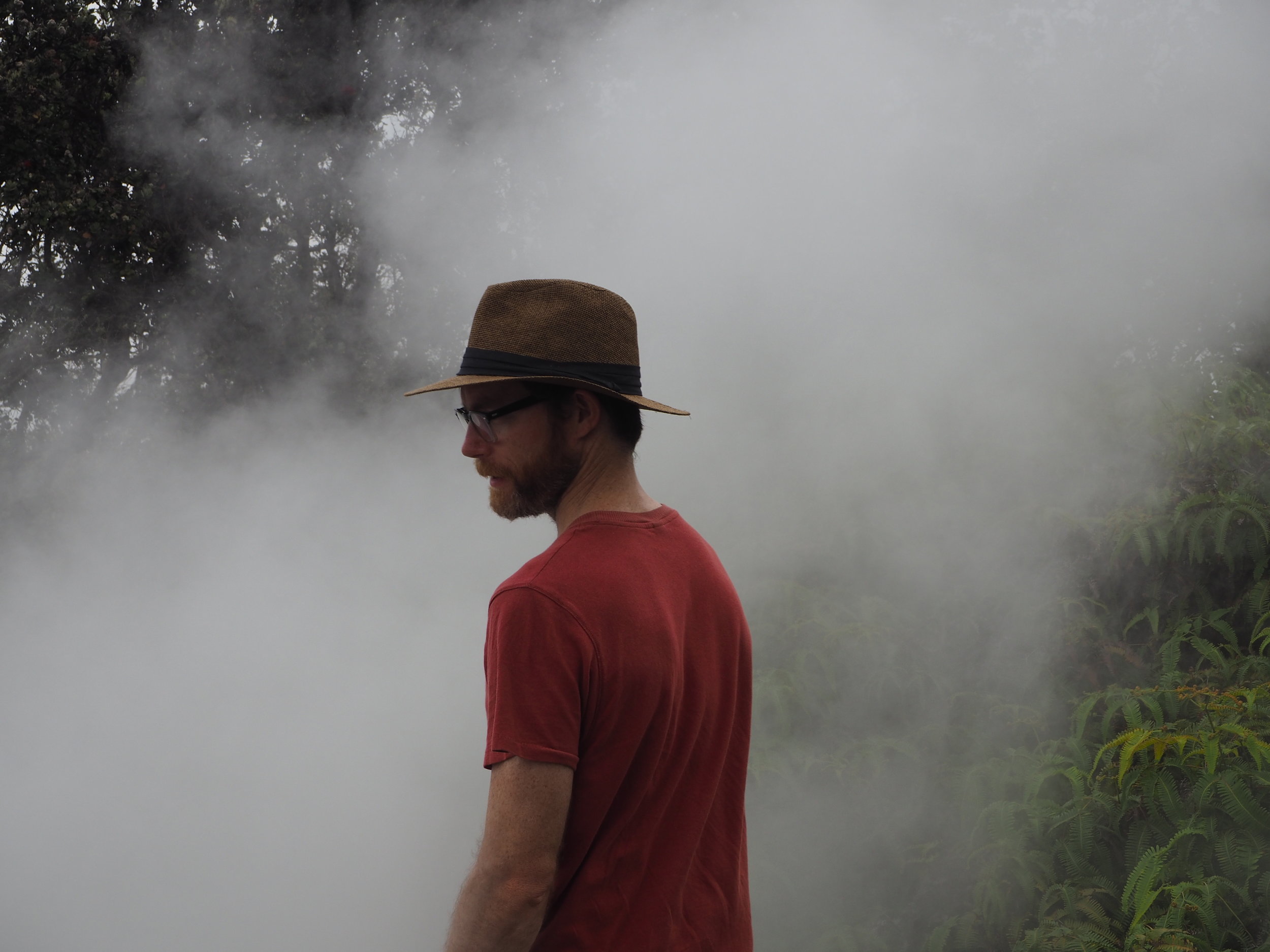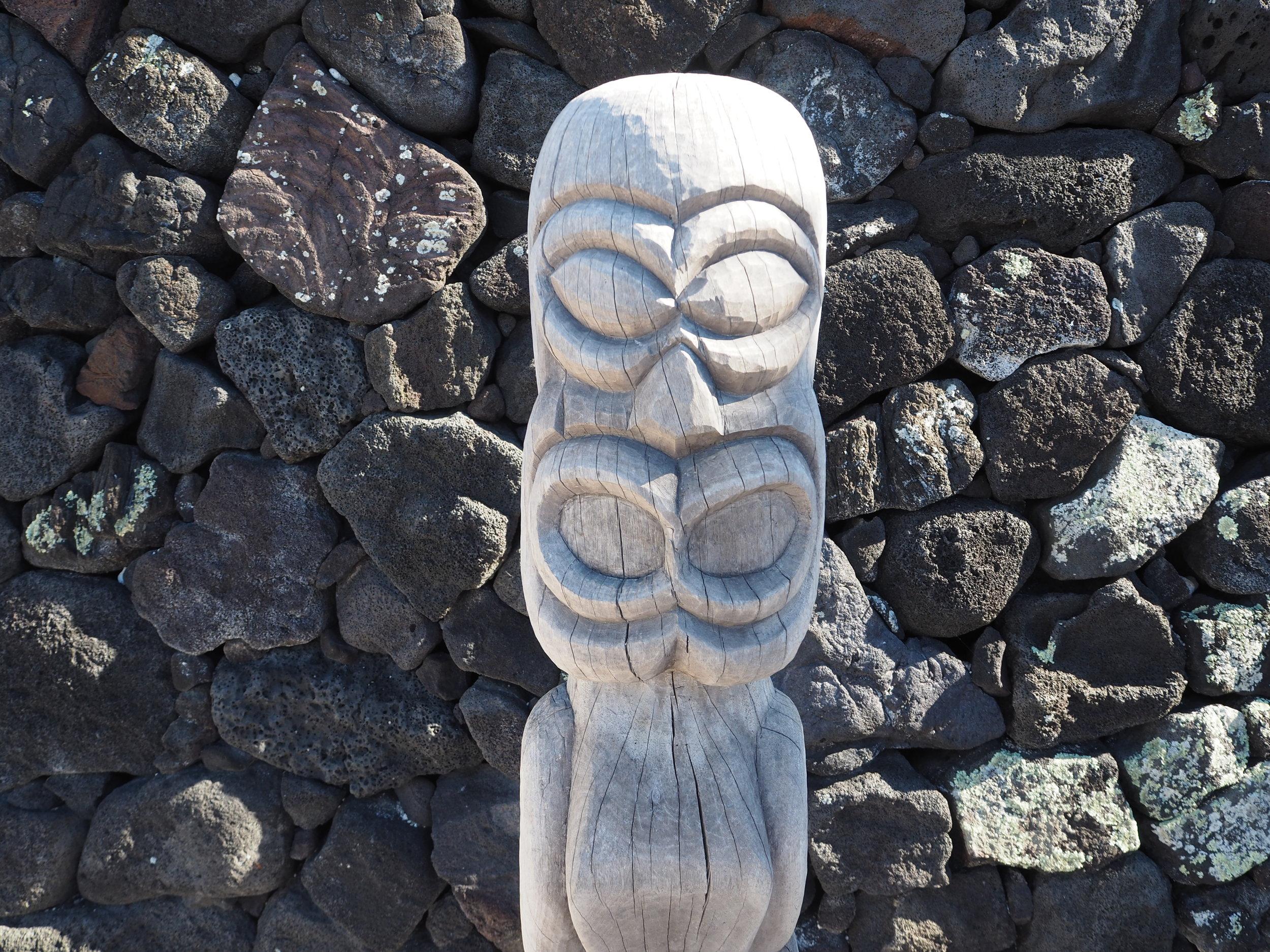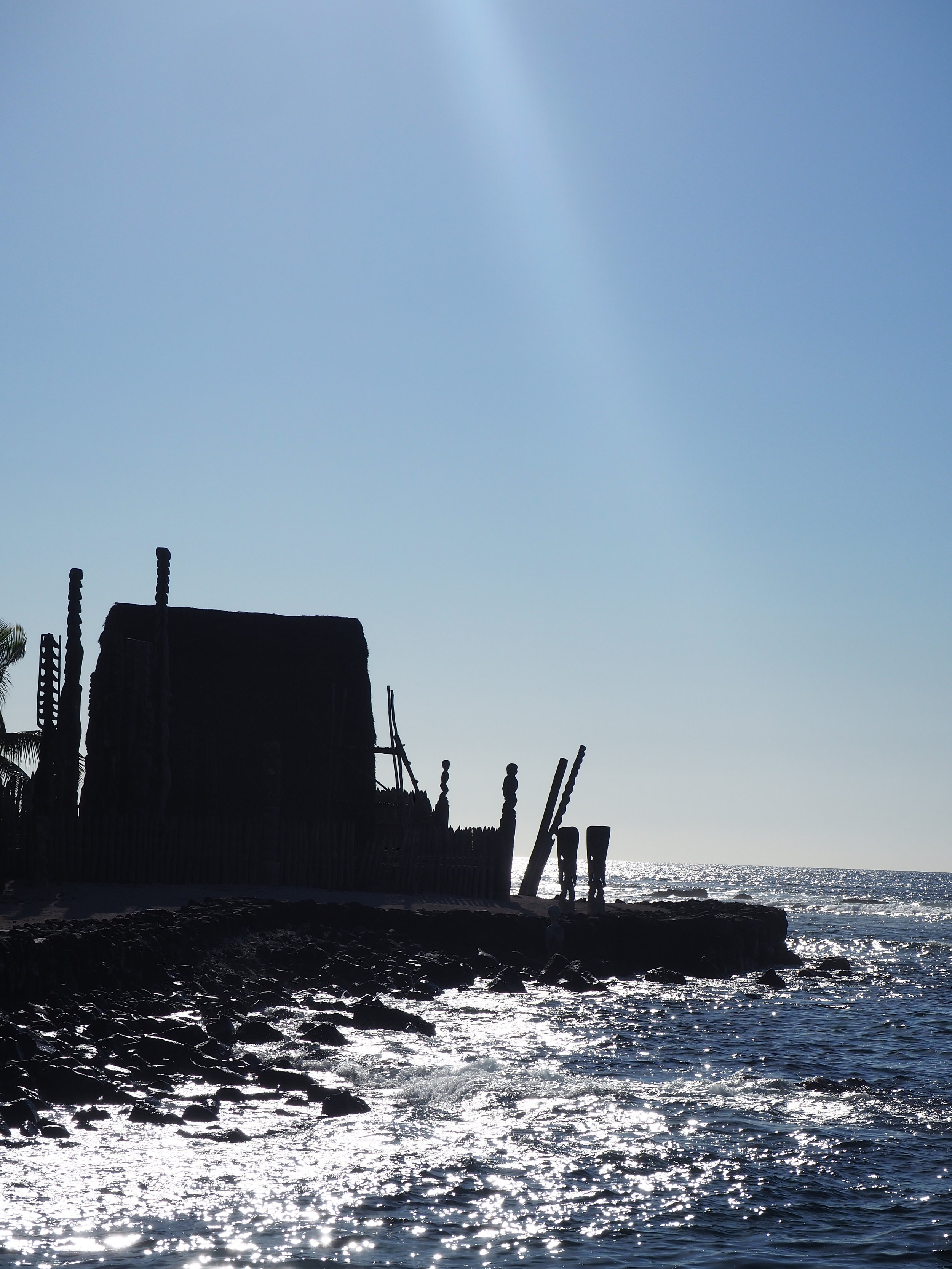Volcanic Family Vacation
Stay Wild
Story & Photos by Amy, Camper and Justin "Scrappers" Morrison
We stood together holding hands in the dark. Looking into the red-hot glowing center of a volcano. We were far from home, but we had never been closer together.
When an opportunity for family fun arises, take it. Don’t weigh the pros and cons, just say yes and go. Take your seven-year-old out of school, tell the office you’re going on vacation, get a pet sitter, don’t worry about the money, and allow your family to become the adventure.
Our family recently said yes to Hawai’i. Not for the postcard-perfect landscape, the warm clear water, the shaded sandy beaches, the poolside refreshments, or the genuine locals and captivating culture, but yes to the hot, dusty, unpredictable, high-altitude, majestic, and unforgiving volcanoes.
The Hawaiian island chain is all volcano. Not the exploding, red-lava volcano that might come to mind, but the geological consequence of the hottest part of our planet’s core deciding to pay a visit to the surface, creating a series of land masses that slowly become mountains, valleys, shores, and homes.
The national parks of Hawai’i are a lot like mainland parks. They’re big, weird landscapes full of tourists trying to get that photo that sums up the whole thing. No photo can capture the layers of cultural and geological history in any national park. Our family kept this in mind and went forward hoping to personally connect with places that are much bigger than our tiny lives.
Hawai’i Volcanoes National Park
If the Hawaiian Islands are all one family, the Big Island of Hawai’i is the youngest sibling. This one is still forming, still growing, and has the most recent volcanic activity.
The Big Island is really big. So big that you need to see it from a helicopter to understand its volcanic landscape. Seen from the ground, volcanoes gently roll across the skyline. Viewed from above, that landscape comes to life. Red-hot lava flows into rain forests that have never experienced fire before. There’s smoke and destruction that you can’t see from ground level because of obstacles like dangerous terrain and poisonous gas. From the air, you can safely witness the continuous chaos and creation of land below. Trees topple over because of the lava flowing under and around their trunks. The forest becomes a sea of dark, hardened lava. The lava meets the ocean and continues to form an underwater landscape of reefs, caves, and future islands. Our son Camper’s great-grandchildren won’t even see this island finish growing.
To get more up close and personal, we headed to Hawai’i Volcanoes National Park. While we were at the ranger station checking out maps, Camper became a junior ranger. “I got a badge. I did all this stuff. It was pretty fun. It was like homework, but a tiny bit funner.”
It’s worth checking out all the designated stops in the park. With each one you learn a bit more about where you are, and up your chances of finding a personal connection with the place. For us that was at the steam vents.
From a distance, the steam looks like little clouds clinging to the ground. The vents are surrounded by hardy native shrubs like the ‘Ohi’a Lehua and its red bottlebrush flowers. Buses unload large groups of international tourists who lean on the railings around the vents with selfie sticks and camera phones. This might sound sad to some, but the easy access helped us feel the invigoratingly hot, damp, and slightly stinky clouds soften our skin.
Standing in the wafting hot clouds of steam coming from Earth’s core, we were cleansed by the sacred breath of Pele, the Hawaiian volcano goddess. Camper wasn’t that impressed, though. “It burned my eyes. It was cool. It felt like air.” Either way, during that moment in the steam, your glasses fog over, you drop out of sight, and all you see and feel is steam. You get lost in the wonder of it all. You’re not thinking about plane tickets, sunscreen, unanswered emails, or homework. Or maybe you are. Maybe in the same moment your adventure connects you to something deeper, something bigger, the adventure offers you a moment to accept it all.
The park has much more than current volcanic activity—it’s also overflowing with volcanic history. As our first grader ran through a large, dark cave, he pointed out, “A lava tunnel is like a tunnel underground that goes to the volcano. Imagine lava in it. That must have been a lot of lava in this giant tube flowing through it. That would be like 60 hundred gallons. Now, like 60 hundred people walk through it.”
Like most national parks, this one gets crowded, but it’s easy to get away and do your own thing. We walked to the rim of the Halema’uma’u Crater of the Kílauea volcano and looked into it. The ashy gray apocalyptic landscape was kind of bland and voggy (volcano smoggy). Camper read a sign out loud for us. “Warning: Hairyous Hot Lava Deep Cliffs Roughen Suckers Flash After Dark.” (Give him a break, he’s just learning to read.) On our way out of the park, a ranger strongly urged us to come back after dark.
Had we not come back after dinner to stumble to the crater’s rim with the help of our tiny phone flashlights, we would have missed the family experience we came for. We have never seen anything more awesome than the mountain-sized red glow of the volcano rising out of a crackling bubbly crater and up into the dark sky toward the stars and universe above. We stared into the planet’s core and, together, saw way beyond ourselves.
Pu’uhonua o Honaunau National Historical Park
National parks were established to preserve natural wonders, but they also do the same for cultural heritage sites like this moody little tiki park on the big island of Hawai’i. The Pu’uhonua protected kapu (law) breakers, defeated warriors, and anyone else seeking sanctuary during wartime. No physical harm could come to those who reached the boundaries of the Pu’uhonua. Camper explains, “It was a place that was really sacred. Real Hawaiians lived there. If you do something bad you have to go there, and then you’re done with the curse. Then you can go back to your family.” We sat at the black rock shore, silently sharing a passion fruit soda and watching the sun dance on the water’s surface. We were not seeking refuge, but we found it.
Haleakalã National Park
Maui kicks some serious beach ass. You’ll find white, black, red, and green sand beaches. Beaches with rocky tide pools, waves, no waves, sun, no sun, or even rain if that’s your thing. Just plop under a kiawe tree and listen to the sound of ocean meeting land all day. Turn away from the beach, and Haleakalã demands your attention.
The smooth, winding drive up to Haleakalã takes you through upcountry farms and fields with stunning views of the island.
Rising above the trees, the birds, and the clouds, the top of Haleakalã National Park feels very close to the sun. Which is one of the reasons its Hawaiian name translates to “House of the Sun.” You can’t always feel the sun’s warmth. It’s pretty cold and windy up there. You can feel the thin air in your lungs and the pressure in your ears. The clouds move fast and reveal pocket-sized views of the crater.
Camper described the clouds: “The mist comes at you, then disappears. It’s really weird and all going in different directions. It’s always changing.” Always changing is right, and you never know what you’re going to get. Pack like you’re going to the rainforest, the mountains, and the desert. You’re likely to get rained on and baked by the sun on the same trip. Conditions are constantly and drastically changing.
The super accessible Sliding Sands Trail can take you as far as you want to go into the crater. Walk just a few feet and you’re eye level with the crater rim. Walk a few more and the quietness of the crater’s landscape pulls you in. The stomping sound of Camper’s feet running down the steep trail left a cloud of red dust in the air behind him. We speculated how far we’d be carrying him on our way back up. For us, the adventure wasn’t hiking all the way into the crater, but heading in, picking a spot to sit, and experiencing the changing show of clouds swirling within.
Haleakalã’s crater has been dormant for centuries, and its central landscape is dotted with smaller craters, cinder cones, eroding outcrops of rock, and loose red gravel as far as you can see. Few plants or animals call this place home. The most eye-catching plants are the glowing silverswords. Native to this mountain, silverswords easily steal the show, like stars in a red gravel sky. Despite their metallic glow, Camper points out: “Silverswords are cool because if you touch one it’s really fluffy. If you tried to cut someone’s face it would just be furry.” We’re pretty sure he just imagined touching them, because these plants are endangered, and were well beyond his reach.
Farther down the volcano, we wandered through the Hosmer’s Grove of black peppermint eucalyptus and Japanese cedar. We had gone from Mars to rainforest within two miles. Bird songs stopped us in our tracks, and we noticed the tiny red berries on the native ‘Õhelo ‘ai (Hawaiian blueberry). We saw flashes of red feathers and the long curling beak of the ‘i‘iwi (Hawaiian honeycreeper) rushing from bush to bush looking for berries.
The ‘i‘iwi’s red feathers reminded Camper of a story our Hawaiian friend Anu Yagi told him. “They’re super rare. They’re not endangered because there’s still 160 out there. [We have no idea why he picked this number.] The people [specialized Hawaiian bird-catchers] that get that bird don’t want to kill it. They just want to take, like, one feather. There’s a nut [breadfruit]. Inside there’s, like, this glue stuff. They break the nut and put the glue stuff on a tree branch and then when a bird sits down on it they get stuck. Then they [the bird-catchers] climb up and take a little feather off it. And then, ummm… they make those feather cloaks for King Kamehameha. Those birds eat the Hawaiian blueberry.
The feather cloaks, or ‘ahu‘ula, were made for Hawaiian chiefs, or ali‘i. These cloaks took thousands of feathers to make, and since each feather was harvested one bird at a time, the cloaks took forever to complete. Aunty Anu said Kamehameha’s feather cloak was worked on for nine generations before it was draped over his shoulders. The cloak that Chief Kalani’Õpu’u gifted to Captain Cook in 1779 was returned earlier this year to Hawai’i from New Zealand. The cloak is made of more than 20,000 feathers and is currently on display at the Bishop Museum in Honolulu.
Haleakalã is huge and could be difficult to connect with on a personal level, but seeing how the park preserves habitat for the berry that feeds the birds that grow the feathers that pre-contact Hawaiians wove into cloaks, we got to witness how this national park also preserves a story deeply connecting people to this place.
This adventure was made with help from
the Hawai’i Visitors and Convention Bureau




























